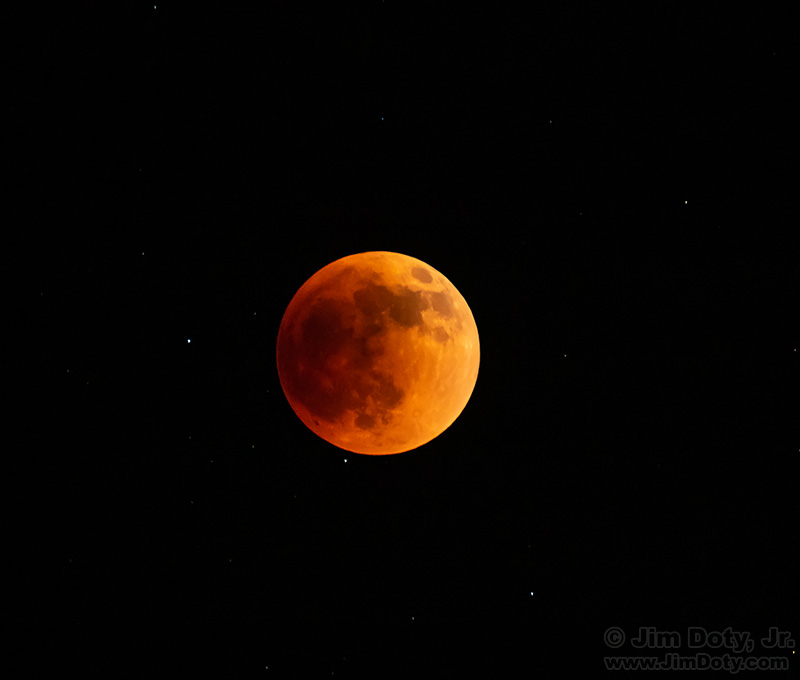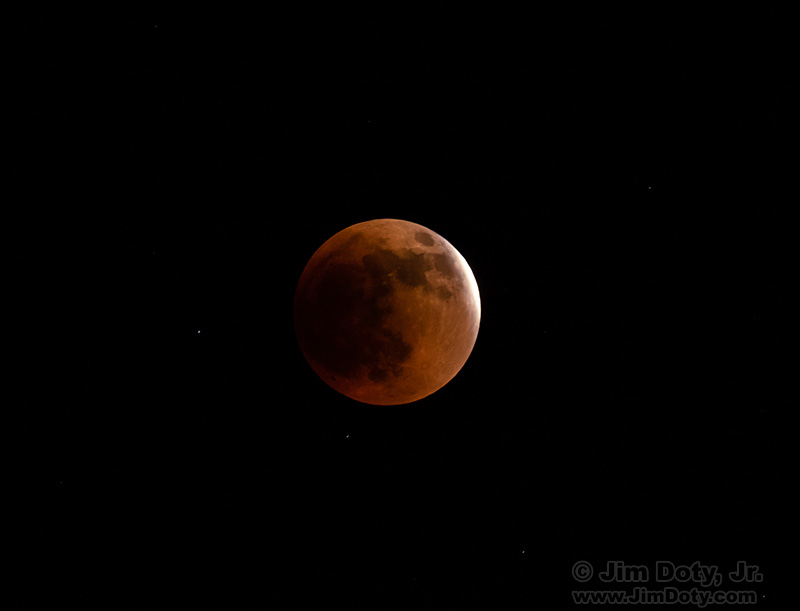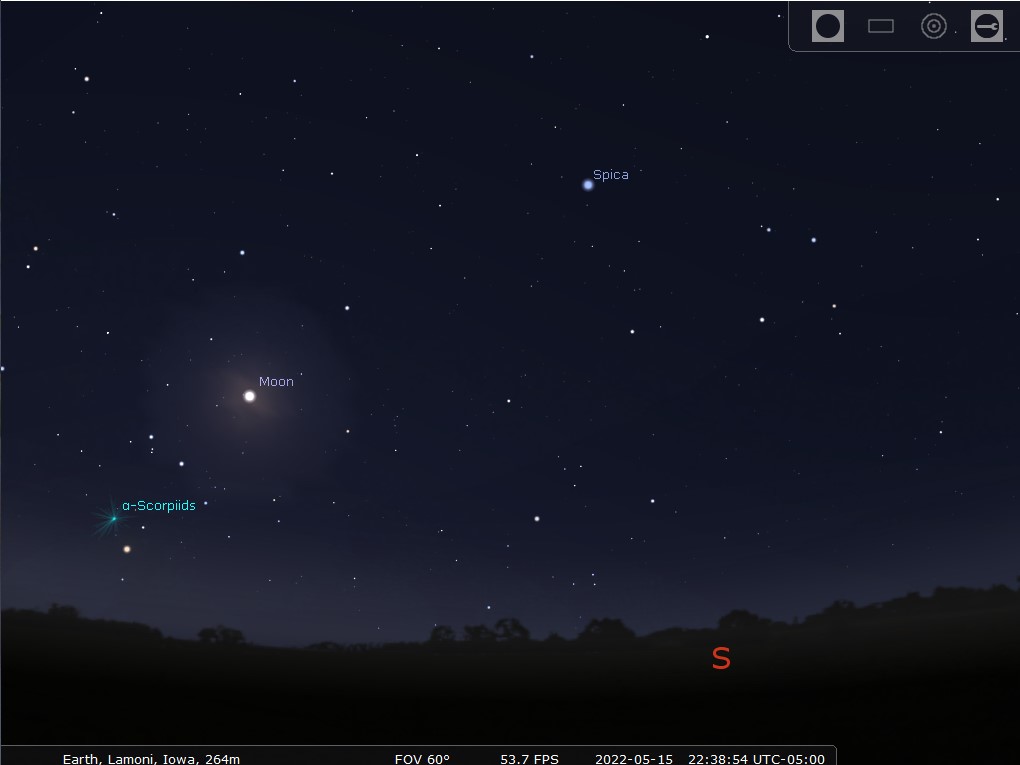It was a beautiful night for photographing the lunar eclipse. This was early in the totality phase at 10:37 pm CDT. I picked this image as my favorite because I like the star background and especially the three stars in a row right below the moon. Not long after I created this image the moon slid in front of the middle star in this trio and, at least to my eye, it was not as pleasing a composition.
This is at 10:27 pm, the last two minutes of the penumbral phase. In two more minutes the light will leave the moon’s northeast limb (edge) and totality will begin. I deliberately overexposed the moon’s limb to show the color in the eclipsed part of the moon.
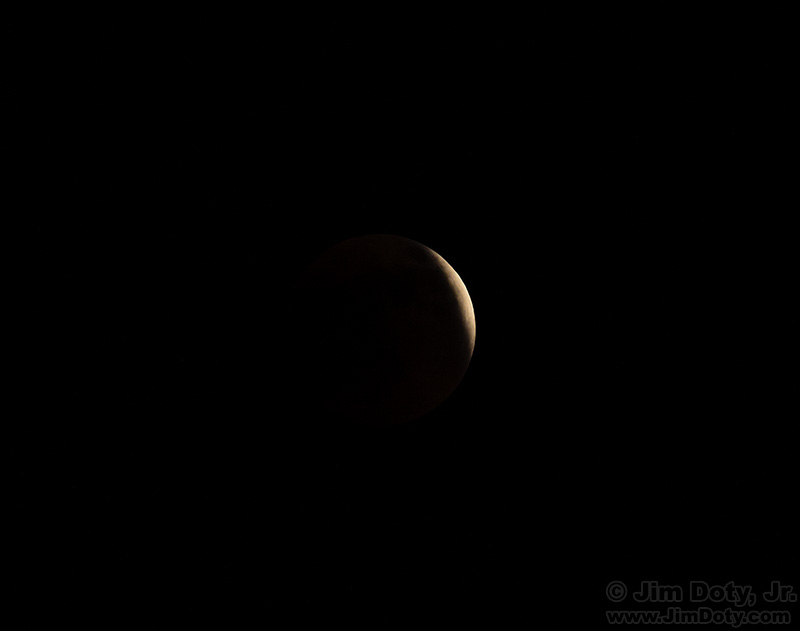
This photo at 10:24 pm is properly exposed for the lunar limb and you can see texture in the limb. The shutter speed for this image was 1/20 second. At 1/13 second the sunlit limb was beginning to wash out and at 1/8 second most of the limb was washed out.
If you missed this eclipse, the next total lunar eclipse will be Monday-Tuesday, November 7-8, 2022. In North America, totality will happen in the middle of the night, November 8. To photograph it, read the “how to” part of my article on this eclipse.
For those of you who are curious, those three stars are (left to right) HIP 76106, HIP 76033 A (a double star), and HIP 75939 in the constellation Libra. I looked their names up in the app Stellarium. It is a free download for your computer and I highly recommend it. Stellarium is a computer generated simulation of the night sky.
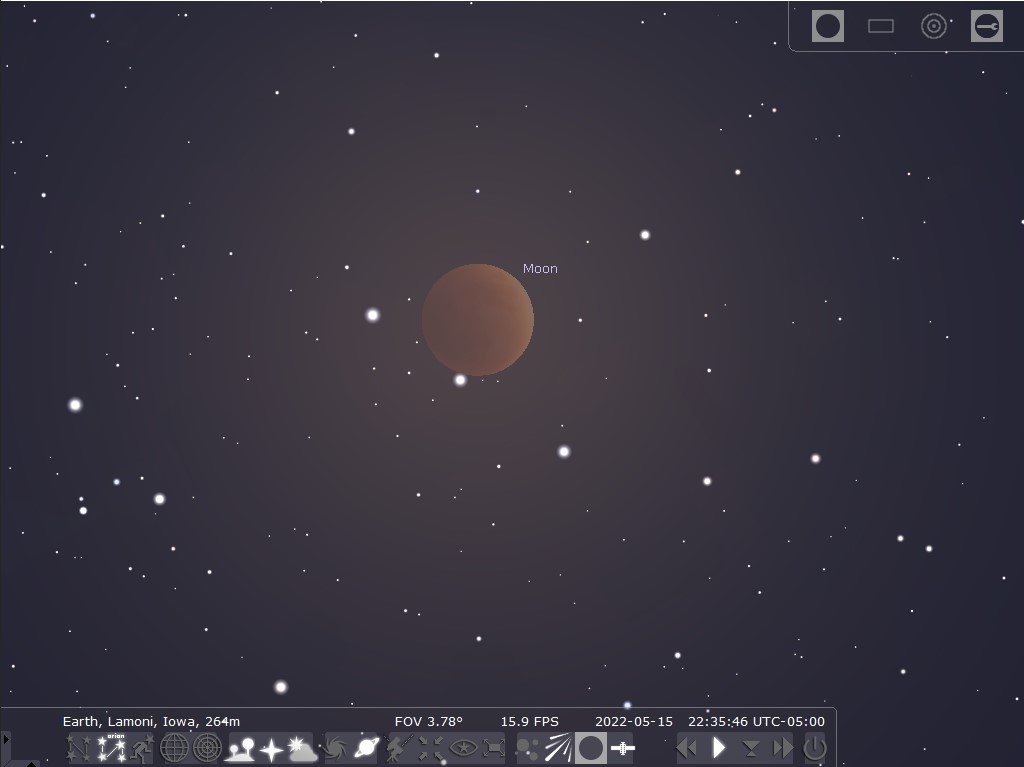
You can set Stellarium to show you the sky from any location on the planet, for any date and time you choose, past, present, or future. You can look in any direction you want, including straight up. You can zoom in on part of the sky as I did for this screen capture immediately above. You can mouse over anything you see and click on the object and Stellarium will give you its name. To download Stellarium go to the link below.
Total Eclipse Photo Data: Canon 7DII, Canon EF 100-400mm lens at 400mm. f/8, 1 second, ISO 2500.
Penumbral Phase Photo Data (exposed for the eclipsed area): Canon 7DII, Canon EF 100-400mm lens at 400mm. f/11, 1.3 seconds, ISO 800.
Penumbral Phase Photo Data (exposed for the limb): Canon 7DII, Canon EF 100-400mm lens at 400mm. f/11, 1/20 second, ISO 800.
Links
The Best Night, Astronomy, and Astrophotography Books
Buying a Headlamp for Night Photography: The Essential Feature

